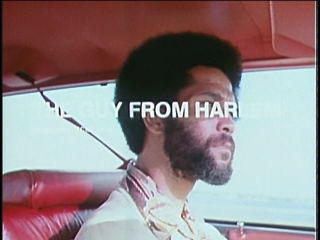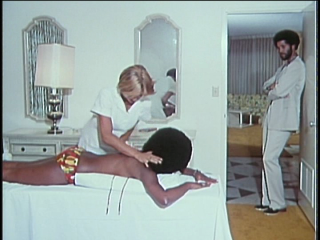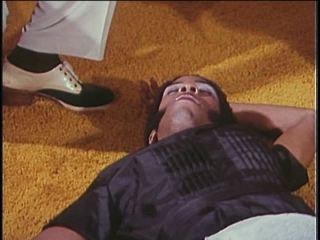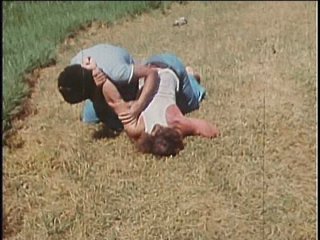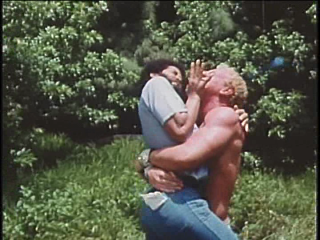 For my 10/11 year old self, perhaps no film was more hyped – or anticipated – than James Cameron’s massive sequel to 1984’s The Terminator. Strangely, I had never seen the original (I was a little young for its combination of science fiction and horror), but I had bought into the advertising completely, even devouring the film’s novelization. Did it live up to the hype? And then some. While my grown self tends to prefer the slasher movie conventions and low-budget ingenuity of the original, the sequel goes for pure adrenaline and nutty action set pieces (along with some state-of-the-art special effects that still manage to hold up). Sure, Edward Furlong is whiny and irritating, and some of the dialogue is cheesy (though I'll defend “I know now why you cry” to my dying breath), but it goes for it so completely that you can’t help but get swept away. James Cameron was on the top of his game here, though his director’s cut is best avoided – the welcome appearance of Michael Biehn as Kyle Reese is handled rather awkwardly – and there’s an alternate ending out there that will leave you shaking your head. As good as big summer action gets.
For my 10/11 year old self, perhaps no film was more hyped – or anticipated – than James Cameron’s massive sequel to 1984’s The Terminator. Strangely, I had never seen the original (I was a little young for its combination of science fiction and horror), but I had bought into the advertising completely, even devouring the film’s novelization. Did it live up to the hype? And then some. While my grown self tends to prefer the slasher movie conventions and low-budget ingenuity of the original, the sequel goes for pure adrenaline and nutty action set pieces (along with some state-of-the-art special effects that still manage to hold up). Sure, Edward Furlong is whiny and irritating, and some of the dialogue is cheesy (though I'll defend “I know now why you cry” to my dying breath), but it goes for it so completely that you can’t help but get swept away. James Cameron was on the top of his game here, though his director’s cut is best avoided – the welcome appearance of Michael Biehn as Kyle Reese is handled rather awkwardly – and there’s an alternate ending out there that will leave you shaking your head. As good as big summer action gets.
Thursday, September 30, 2010
Capsule Review: Terminator 2: Judgment Day (1991)
 For my 10/11 year old self, perhaps no film was more hyped – or anticipated – than James Cameron’s massive sequel to 1984’s The Terminator. Strangely, I had never seen the original (I was a little young for its combination of science fiction and horror), but I had bought into the advertising completely, even devouring the film’s novelization. Did it live up to the hype? And then some. While my grown self tends to prefer the slasher movie conventions and low-budget ingenuity of the original, the sequel goes for pure adrenaline and nutty action set pieces (along with some state-of-the-art special effects that still manage to hold up). Sure, Edward Furlong is whiny and irritating, and some of the dialogue is cheesy (though I'll defend “I know now why you cry” to my dying breath), but it goes for it so completely that you can’t help but get swept away. James Cameron was on the top of his game here, though his director’s cut is best avoided – the welcome appearance of Michael Biehn as Kyle Reese is handled rather awkwardly – and there’s an alternate ending out there that will leave you shaking your head. As good as big summer action gets.
For my 10/11 year old self, perhaps no film was more hyped – or anticipated – than James Cameron’s massive sequel to 1984’s The Terminator. Strangely, I had never seen the original (I was a little young for its combination of science fiction and horror), but I had bought into the advertising completely, even devouring the film’s novelization. Did it live up to the hype? And then some. While my grown self tends to prefer the slasher movie conventions and low-budget ingenuity of the original, the sequel goes for pure adrenaline and nutty action set pieces (along with some state-of-the-art special effects that still manage to hold up). Sure, Edward Furlong is whiny and irritating, and some of the dialogue is cheesy (though I'll defend “I know now why you cry” to my dying breath), but it goes for it so completely that you can’t help but get swept away. James Cameron was on the top of his game here, though his director’s cut is best avoided – the welcome appearance of Michael Biehn as Kyle Reese is handled rather awkwardly – and there’s an alternate ending out there that will leave you shaking your head. As good as big summer action gets.
Capsule Review: Little Caesar (1931)
 One of the first (and best) of the gritty gangster movies that set the pattern for the hundreds that would follow, Little Caesar follows the rise (and – of course – fall) of Edward G. Robinson’s Rico, a man obsessed with power and willing to do almost anything to get it. At this point much of the action – and Robinson himself – have been parodied and imitated so often that it can be a little hard to take some of the dialogue seriously, but it’s impossible to not be enraptured by Rico’s meteoric rise. It says a lot about the cynical atmosphere at the time the film was made – prohibition and the depression – that it’s actually Rico’s loyalty to an old friend that ends up being his undoing. Robinson is terrific in a firecracker performance, though Douglas Fairbanks Jr. has little to do as the dance-loving Joe. This is the deepest that filmgoers had gone into the criminal lifestyle at the time, and they obviously liked what they saw, laying the groundwork for future classics from The Public Enemy to The Godfather.
One of the first (and best) of the gritty gangster movies that set the pattern for the hundreds that would follow, Little Caesar follows the rise (and – of course – fall) of Edward G. Robinson’s Rico, a man obsessed with power and willing to do almost anything to get it. At this point much of the action – and Robinson himself – have been parodied and imitated so often that it can be a little hard to take some of the dialogue seriously, but it’s impossible to not be enraptured by Rico’s meteoric rise. It says a lot about the cynical atmosphere at the time the film was made – prohibition and the depression – that it’s actually Rico’s loyalty to an old friend that ends up being his undoing. Robinson is terrific in a firecracker performance, though Douglas Fairbanks Jr. has little to do as the dance-loving Joe. This is the deepest that filmgoers had gone into the criminal lifestyle at the time, and they obviously liked what they saw, laying the groundwork for future classics from The Public Enemy to The Godfather.
Wednesday, September 29, 2010
Shock and Awe - The Grindhouse Experience #5 (9/25/2010)
After weeks of intense jealousy regarding those able to attend the Toronto International Film Festival (as well as other screenings going on in the Greater Toronto Area), it seemed high time for me to once again run the film gauntlet - and what better time to take advantage of some of the new cinema venues that Toronto has to offer than by attending the 5th edition of Dion Conflict's Shock and Awe - The Grindhouse Experience all night marathon at the Fox Theatre.
Having turned 30 years old mere days ago, perhaps I was getting a little old to be prying my eyes open to fit in a few more frames of trashy horror flicks. My withered bones didn't take as well to lack of sleep as they did in my teenage years, and let's not forget that I have a wife who would rather consume a bucket of liquid draino than sit through some of the films in the very impressive line-up. However, I've done my time in all of the previous editions of the all-nighter, and have yet to submit to a moment of sleep. The streak must continue!
But Shock and Awe was just the main course, and there's much to experience before I get to that. Originally I was hoping to check out a screening of Citizen Kane at the Bell Lightbox (part of their Essential 100 series of screenings), but we got into the city a little late. So - after checking into our hotel - my wife and I instead visited the venue to sees A Film Unfinished.
A Film Unfinished (2010)
An often harrowing and (rightfully) unpleasant documentary, A Film Unfinished contains surviving footage of a propaganda film that the Nazis shot in the waning days of the Warsaw ghetto before many of the inhabitants were shipped off to death camps. Director Yael Hersonski uses voice-overs reading from diaries and court transcripts (as well as filmed accounts from some who were actually in the ghetto) to add detail (and necessary context) to the proceedings. While the tactics of the original filmmakers to pervert the truth of what was occurring within the walls of the encampment is sickening, the film provides some amazing insight in the margins of the frames regarding what life was like for those living through one of the darkest periods in human history. One of the final sequences features footage of a mass grave, and is difficult to watch - particularly when inter-cut with the tearful reactions of the holocaust survivors. A draining but rewarding experience.
I should mention that the Bell Lightbox is a beautiful location, though the staff still seemed very tense about the idea of people actually coming in and watching films. A location dedicated to the best possible presentation of these films is something Toronto is lucky to have, and i'm sorry I missed the free screenings of Chaplin's City Lights and Buster Keaton's Sherlock Jr. over the rest of the weekend. Everything about the interior screams a love for film and filmmakers, and I think that feeling will only become more intense as others discover it.
Following dinner I left my wife behind to check out the Toronto Underground Cinema on Spadina, which is the renovated location of the former Golden Classics theatre which specialized in kung fu films throughout the late 70s and early 80s. The theater itself is HUGE, though it's almost surreal to walk through the small corridors looking for its entrance. Why was I there? Well, having watched A Film Unfinished, I decided to create the most bad-taste possible double feature by watching a special screening of the 70s trash classic Ilsa: She-Wolf of the SS.
Ilsa: She Wolf of the SS (1975)
A raucous crowd greeted the shameless sleaze of the original - and likely the best - of the Naziploitation genre. In the recent American Grindhouse documentary Don Edmonds mentioned being horrified when he first read the script for Ilsa, but he threw himself into the material with tongue planted firmly in cheek and - along with the legendary lead performance from Dyanne Thorne (along with some some left over Hogan's Heroes sets) crafted a trash classic. This movie really has everything: violence, mutilation, gunplay, nipple torture, whips and chains and some of the most inventive torture this side of Bloodsucking Freaks. It's shit, of course, but it's certainly never dull.
And that was the end of Day 1.
Day 2 was spent pleasantly wandering through Toronto. I briefly considered taking in a screening of The Human Centipede at the Toronto Underground Cinema but, having not enjoyed my first viewing, decided to instead prepare myself for the evening ahead. However, since I have a rather awful sense of direction I decided to head to the Fox Theatre a bit early and - in a classic bad move on my part - check out the film that was running before the Grindhouse marathon. So much for pacing myself.
Oddly, instead of trying to capture a few folks who might wander in early with something a bit more genre friendly, I ended up instead watching the Angelina Jolia action vehicle Salt.
Salt (2010)
I'm not going to lie to you, the early check-out from my hotel that morning meant that I was sort of hoping I might be able to catch a few minutes of sleep during this one. That said, I did leave open the possibility that this might be decent, as while director Phillip Noyce is inconsistent he did direct the terrific Rabbit Proof Fence a few years back. This, however, was predictable in its unpredictability as we're left wondering if CIA agent Evelyn Salt (Jolie) is actually a brainwashed Russian agent that has been waiting for decades to spring into action. The cast is great, with Liev Schreiber and the always awesome Chiwetel Ejiofor putting in solid work, but the action is surprisingly lifeless. It also is really slow getting going, and Jolie just isn't believable as an unstoppable ass-kicker. Maybe I shouldn't have re-watched Terminator 2 last week, as it made the movie as a whole feel pretty wimpy (and Angelina aint no Linda Hamilton).
Oh, but it was loud. So.. no sleep till morning.
The great unwashed masses (hey! I showered!) came from all around to take in the all night festivities, and I saw a number of recognizable faces from previous Shock and Awes. Somehow we keep coming back, though by the end one can't help but feel a bit wiped. Or maybe that's just my rapidly increasing age talking.
Dion came up to the (working!) microphone and welcomed us all, before jumping right into the first film. This seemed like the tightest schedule for a Shock and Awe yet, as there was some sort of religious screening happening at 10 am the next morning. In fact, at a previous screening we were leaving right before a showing of the ridiculous Kirk Cameron-starring Christian movie Fireproof. What the heck, Fox Theatre?
Anyway.. let's begin.
Kingdom of the Spiders (1977)
For some reason I always confuse this with the film The Giant Spider Invasion, but this is actually a considerably more competent nature-takes-revenge film with plentiful arachnids and a handful of scenes where things go bonzo gonzo that had the crowd roaring. William Shatner plays a small town vet/ladies man who investigates the death of a prized cattle owned by a local farmer (played by legendary western actor Woody Strode). Turns out it was spiders, and things wildly out of control as our eight-legged-friends turn up all over town in the most unexpected places. Things eventually go all Night of the Living Dead, as the few survivors try to hole up in a cabin while spiders pour in through chimneys, windows and air-conditioning vents. Perhaps the biggest laugh of the film - aside from Shatner dancing around piles of spiders in an obvious attempt not to step on one - came from Strode's wife, who attempts to fend off some of the insects with a hand gun. Needless to say, it goes badly.
Filled with hammy acting and mis-judged melodrama - along with lots and lots (and lots) of spiders - this was the perfect film to kick things off. The 16mm print looked fine - and didn't suffer from some unfortunate pan and scanning like the mystery film did. A great time all around.
Brief break allowed for soda and a burrito. I'm putting my life in my hands at this point. That leads us right into..
Goin' Coconuts (1978)
Mystery Film (19XX)
The Stud (1978)
Red Scorpion (1989)
Ghoulies (1985)
Brief break allowed for soda and a burrito. I'm putting my life in my hands at this point. That leads us right into..
Goin' Coconuts (1978)
Probably the film of the night that I was most unsure about, and also the one that ended up being the biggest surprise. You couldn't be blamed for not expecting much out of a late-70s Hawiian espionage musical starring Donnie and Marie Osmond, but it actually provided a fine counter-balance to the mix of sleaze and horror that typified the rest of the night's films. Of course the music is awful, and Donnie and Marie are bland even for Mormons, but the supporting cast - including Mel Brooks regular Kenneth Mars doing a variation on his Inspector Kemp from Young Frankenstein, Harold Sakai acting (and looking) like Oddjob, and Golden Girls regular Herb Edelman as the pair's neurotic manager - all seem to be having a load of fun, and this energy carries though to make the whole thing work. It still look awfully like a made-for-TV movie, but it's a lot of fun and pleasantly inoffensive.
Fresh air only damages the lungs at this point. Let's keep going with the night's mystery film.
Fresh air only damages the lungs at this point. Let's keep going with the night's mystery film.
Mystery Film (19XX)
As usual we were sworn to secrecy regarding the title of the mystery film, but - as they always do - it managed to subvert expectations nicely, as we got to check out a rarely seen early 80s horror. I can't go into much detail, though i'll admit that overall it didn't do much for me, though it has a really good cast (including another small appearance by Charles Lane, who seems to appear in every film i've been watching lately) and a particularly schmaltzy ending. The 16mm print seemed to cut off a bit of information, though it was never difficult to keep track of what was going on.
Only half way through? But my eyes are getting.. very.. heavy.. Time to refill on soda, and jump right into my favorite film of the evening.
The Stud (1978)
A trash masterpiece, The Stud is an adaptation of a Jackie Collins novel starring Joan Collins as the original awful cougar (it's telling that the film's sequel is called The Bitch). Collins plays a wealthy club owner who turns young waiter Tony Blake (Oliver Tobias) into the manager of the hottest discoteque in town, while treating him like her own private stud on the side. But Blake is a bit too ambitious to remain a pet, and soon he's trying to break out from under her thumb to start his own club. Filled with outrageous fashion, plenty of nudity, and some pounding disco music the film has energy to spare - and is willing to let it all hang out. The American print has dubbed "American" voices over the strong British accents, which just adds to the surreal nature of some of the scenes - particularly a memorable set piece in Paris that features a sex trapeze! I love a film willing to embrace excess, and The Stud does that in spades. Just a ridiculous amount of filthy fun.
Red Scorpion (1989)
I'd never seen Red Scorpion. Or, at least, I haven't retained any memory of the film. So, I was pumped to check out one of the defining roles for the recently resurgent Dolph Lundgren. Frankly, what's so fascinating about the film is how deliberately it's meant to convert Dolph from the evil Russian in Rocky IV to a freedom loving commie killer in this film, all the better to portray all American heroes like He-Man and The Punisher! Dolph really was a man-mountain at this point (though was rather lacking in charisma), and demolishes everything in his path - and has a spiritual awakening after nearly being executed by his countrymen. Soon he's fighting with African revolutionaries and spouting one-liners like a true action star, and he's supported ably by the always awesome M. Emmet Walsh and director Joseph Zito - who also directed the similarly anti-Communist Invasion U.S.A.
Dolph's soujorn in the desert started to make staying awake awfully difficult, but once things got explodey I was able to power through to the end. Which is a good thing, because it's 7 AM and there's only one more to go!
Dolph's soujorn in the desert started to make staying awake awfully difficult, but once things got explodey I was able to power through to the end. Which is a good thing, because it's 7 AM and there's only one more to go!
Ghoulies (1985)
Charles Band later went on to create a cottage industry of films featuring small monsters - Puppet Master 1-99, Demonic Toys, Dollman - but he broke through (as a producer at least) with this modestly budgeted Gremlins rip-off in the mid 80s. Actually, calling this a Gremlins rip-off is rather unfair, as aside from the tiny creatures on display (notably shown in a toilet on the poster) the plot holds very few similarities, instead focusing on a young couple who inherit an old mansion that was once used to hold satanic rituals. Soon the male half is starting to get posessed by evil, and - with the help of some awesome dwarfs - gets to work bringing the evil Malcolm Graves back from the dead. Thankfully the awesome Jack Nance is around to help save everyone - including the couple's irritating friends (one of whom is a young Mariska Hargitay). There's a big magic fight at the end, and a "shock" ending promising a sequel - of which there ended up being three more!
And with that it was time to wander back out into the cool Toronto morning air, which was surprisingly filled with commotion. Apparently there was some sort of marathon going on, and the spectators looked a bit surprised to see a collection of pale geeks shuffle into the sunlight. Who could blame them?
It would be a while until I got some much needed sleep, but as I rode the greyhound bus back towards Peterborough I was left with only one lingering question:
When can I do it again?! Bring on Shock and Awe #6.
And with that it was time to wander back out into the cool Toronto morning air, which was surprisingly filled with commotion. Apparently there was some sort of marathon going on, and the spectators looked a bit surprised to see a collection of pale geeks shuffle into the sunlight. Who could blame them?
It would be a while until I got some much needed sleep, but as I rode the greyhound bus back towards Peterborough I was left with only one lingering question:
When can I do it again?! Bring on Shock and Awe #6.
Saturday, September 25, 2010
Trigger (2010)
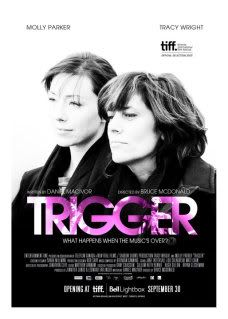
Bruce McDonald is one of Canada's best working directors, second only, in my mind, to David Cronenberg; right now, Cronenberg gets to hold onto that spot due more to his record than his current output. McDonald is sort of like Canada's answer to Robert Rodriguez, in that he makes interesting movies quick and on the cheap; the major difference is that McDonald's movie are almost always great. Rodriguez is an expert at making B-movie pastiche; McDonald is capable of making touching and even subtle films regarding punk music, teenage angst, and infected words that turn people into mindless zombies. Advantage: McDonald.
TRIGGER is one of two new movies by McDonald, both of which played the festival. I opted out of catching THIS MOVIE IS BROKEN, despite it's interesting premise, since I'm not a fan of Broken Social Scene. Still, the fact that the man has two new movies playing simultaneously shows you his work ethic.
In many ways, TRIGGER is the spiritual sequel to McDonald's best-known film, HARD CORE LOGO. And that's not surprising; Daniel MacIvor, the screenwriter, was asked by McDonald to produce a MY DINNER WITH ANDRE-style script which would feature Joe Dick and Billy Tallent, the main protagonists of McDonald's earlier punk masterpiece. When Hugh Dillon (the man who was Dick) wasn't able to fix his schedule for the shoot, McDonald and MacIvor decided to re-write the script for two female leads.
So what you get with TRIGGER is the story of Kat (Molly Parker) and Vic (the late Tracy Wright), the main ingredients behind the eponymous band Trigger, which broke up a dozen years before the movie takes place. Kat and Vic reunite for a "Women in Rock" festival, or some such thing, and in doing so set to reminiscing and airing their grievances. Both are addicts: Vic escaped death-by-heroin years ago, and keeps things straight, while Kat is a recovering alcoholic. Both have taken completely different paths in life: Kat, who remains shockingly youthful, is some sort of big-whig consultant, while Vic is putting together a solo album of acoustic work and is just happy to still be alive.
What makes TRIGGER work so well is that their history is instantly believable. From the moment the two characters begin to talk, you can feel all that history. You can even believe that they're both ex-punk rockers (despite the fact that the one concert scene clearly displays that neither actor can actually play their instruments). While Molly Parker is great, as always (I'll always think of her as Alma Garret from "Deadwood"), it's Wright who just owns every fucking second of this movie. Her Vic is a strong woman who has lived a hard, hard life, and shows every minute of her struggles on her face. She is toughened by the life she's lived, but she's also struggling just to keep it all together.
At one point, around half way through the film, Vic begins a monologue that lasts, I'm guessing, at least five minutes, and probably more. The scene is an extreme close-up of her face, and there are no cuts. It's just one, incredibly long monologue, reminiscent in many ways of Harry Dean Stanton's lengthy monologue in PARIS, TEXAS. It's just incredible to watch. You just keep wondering: why wasn't Wright in more things? Why wasn't she lauded, celebrated? Why isn't there a fucking statue in her honour.
So, long story short, go see TRIGGER, if you get the chance. It's better than that shit you were gonna watch anyway.
Sunday, September 19, 2010
Jive Turkey (aka Baby Needs a New Pair of Shoes) (1974)
An often jumbled - though quite solid - blaxploitation film, Jive Turkey (also known as Baby Needs a New Pair of Shoes and, um, other names) features some strong performances, some great music, and provides a unique spin on the mafia films of the 70s. While the film struggles against its budget in trying to create a period atmosphere, director Bill Brame lets loose with some fun exploitation elements - a transvestite hired killer with razor sharp nails, an opium den/bordello with bellydancing as entertainment, a tense game of russian roulette - that brings a sense of fun and excitement that (generally) helps the film through some of its slower and more confusing moments.
Paul Harris - who had an unfortunately short acting career - is terrific as Pasha, a crime-lord who runs the "numbers" racket, which keeps him and his men - including the flashy Sweetman (who acts as the number runner), and his right hand man Jimmy Rush - tightly entwined with the community. Unfortunately the Italians - led by the vicious Tony (F-Troop's Frank DeKova) - have decided to expand their operations from drugs to numbers, which makes Pasha a marked man. Pasha protects himself with the help of a hired killer transvestite named Serene, but also has to also dig out the rat that has been feeding information to the Italians, while also dodging raids from the police.
Let's begin by talking a little bit about the setting of Jive Turkey. It's a period piece, taking place in 1956, though it's absolutely full of anachronisms. Hairstyles, fashion, vehicles, slang.. really, aside from a few instances of period clothing and cars this is very, very clearly a product of the mid 1970s. A title card also notes that what we're seeing is based on a true story, though the "names, places and events have been changed to protect the innocent." In other words, it's all a fib. I'm guessing that the attempt at setting things in the 50s was an attempt to ape The Godfather a bit, and it really is an admirable effort - most low budget films of this time period wouldn't even attempt something that ambitious - but unfortunately the attempt here is mostly unsuccessful. In fact, by the end you'll likely forget that what you're watching doesn't take place in - what was at the time - modern day.
I mentioned that things get a bit confusing, and this is mostly because we're introduced to a large number of characters at the beginning of the film, and at first it's hard to gauge just who we're supposed to be focusing our attention on. I'll also admit to not knowing much about what a "numbers game" - the film's core concept - was all about, and the film never elaborates. While I could mostly work out the basics, I had to go to wikipedia in order to fully grasp it. It's basically an illegal lottery where the better picks a three or four digit number to match a random number from the next day. Pasha and his men are respected and beloved in the city, and focus their attention solely on gambling and prostitution - a common theme in blaxploitation - while staying away from dealing hard drugs.
The acting from the leads is fine, particularly Harris as Pasha, Reginald Farmer (who showed up in some memorable 80s roles) as Sweetman and Frances E. Williams as the opium den/bordello owner Moma Lottie. Unfortunately, as you get deeper into the cast, things take a significant turn for the worse, particularly from the actors playing police officers who seem to be in a competition to see who can read lines more woodenly. Still, Harris brings plenty of gravitas (and a terrific voice) to the lead, and Sweetman has a great moment (echoed at the end) where he (vocally) shoots down a youth who cops him some attitude. These characters have a very lived in feel, though I wish there was more elaboration on their background and how the criminal operation developed.
Director Bill Brame had a long editing career - starting on the 60s Star Trek series and continuing to do plenty of television and features (including Beyond the Poseidon Adventure) - and he made his directorial debut with the memorable biker film The Cycle Savages, but here you'll see many of the production mistakes common to low-budget 70s blaxploitation efforts: a boom mic is clearly visible in an early scene, there are plenty of dubbed lines and ADR which are obviously meant to connect shaky scenes together, and we even get a car chase with the requisite squealing tires on dirt. Brame keeps the pace moving, but there are plenty of frustratingly confusion moments and the final reveal of the rat doesn't hold the impact that it should.
While the plot doesn't hold many surprises - in fact, things run fairly predictably - co-writers Howard and Elizabeth Ransom have some fun with the dialogue ("Trouble." "Like in white folk's middle name?"), though they rely pretty heavily on the N-word, particularly in any scene featuring a racist white cop (which appears to be all of them). Still, when poor Nathan wrestles with his little brother and tells him he's going to take care of him and will soon be a millionaire, it doesn't a genius to guess that his number will soon be up.
Even low-budget blaxploitation efforts tend to have great, funky soundtracks and Jive Turkey has some wonderful incidental music by Phil Moore - who had a long, memorable career in music - and some fun original songs by Ernie Lee Banks (who also plays the a brief comic relief role of DuDirty). Again, the music doesn't exactly evoke the period in which the film is supposed to take place, but it's really enjoyable - particularly the "Numbers Game" song used in the film's trailer.
The IMDB says that Jive Turkey was intended to be shown in the 1.85:1 ratio, but the DVD version of the film - in this case taken from the Millcreek 50 film Martial Arts collection - is presented in a scratchy full-screen transfer. The image quality and color are considerably better than The Guy From Harlem, but there's still the usual damage and lost frames that are common to low-budget films that have slipped into the public domain. Some dialogue seems to be lost in the opening scene, but the damage isn't distracting. The movie is surprisingly violent, particularly the scenes where Serene goes work, and there are a few welcome scenes of nudity spread throughout.
Since this is Millcreek there are no special features. We'll take four chapter stops, and we'll like it!
While hardly a lost classic, Jive Turkey tries to do some interesting and original things for a blaxploitation film, and while the social commentary - if any - is lost on me aside from the usual jabs at racist cops and drug-pushing criminals, there's still plenty here to enjoy. Some fine music and strong performances help the production rise above the many technical issues and a confusing script with too many extraneous characters. A brisk good time, with specks of the usual exploitation traits, to please fans of the genre.
The Illusionist (2010)

Sylvain Chomet's THE ILLUSIONIST tells the story of an aging magician, being pushed out of the spotlight and into the margins by rock and roll, television, and all the other shiny things that kids were into those days. Forced to find work wherever he can, the magician eventually encounters a young Scottish girl, who believes in his magic. Their relationship, based on this misunderstanding, is both beneficial and detrimental to both of them, in subtle ways.
THE ILLUSIONIST is, essentially, as good as it gets. It's sentimental without being sappy, it's funny without being broad or crude, and it's intelligent without being pedantic. But mostly it's just graceful, and that's probably a word I've never used before.
Chomet, who created the wonderful film THE TRIPLETS OF BELLEVILLE, here adapts Jacques Tati's final screenplay into a truly unique animated vision, one about the indignities of growing old in an accelerated culture. Think of it as UP without the talking dogs.
While I'm making comparisons, one thing Chomet's animation shares with Miyazaki's, is its attention to detail. There's something remarkable about seeing an animation move and act in truly human ways. In SPIRITED AWAY, Miyazaki took pains to make sure that Sen put on her shoes the same way a little girl would, twisting her heel and grinding her foot into place. In THE ILLUSIONIST, the film's protagonist--an aging vaudeville-era magician--moves with all the characteristic ticks and motions of Tati himself. This coming-together of the purely artistic and the casually human results in something new, something wonderful. I can't explain what, though, or why.
THE ILLUSIONIST is such a successful film, because it's so incredibly stayed in its execution. It doesn't go for broad strokes. There are no enormous epiphanies, or even climaxes; one event follows the other, with utter simplicity. Magic leaving the world is both a good thing--one cannot live a life of illusions--and a sad one, since it leaves us with nothing but the dreary world we live in.
Labels:
Animation,
Growing Old,
Jacques Tati,
Magic,
Sylvain Chomet
Saturday, September 18, 2010
Capsule Review: A Clockwork Orange (1971)
Still controversial after all these years, A Clockwork Orange (adapted from the Anthony Burgess novel) is a garish dystopian sci-fi meditation on morality which has faced accusations of glorifying violence since its release in 1971. I'm sympathetic to these accusations as while the character of Alex (played by Malcolm McDowell in his greatest and most recognizable role) is shown to be terrifying and vicious, his actions are matched by the dehumanizing effects of behaviorism promoted by the government. In the face of such wide reaching hypocrisy, Alex - who also serves as a narrator - really does become a sort of particularly reprehensible anti-hero. Director Stanley Kubrick may be interested in morality, but he doesn't moralize over the character's actions, and the intense violence and copious amounts of nudity remain startling (though have obviously been tamed by the film's the have come since). A cold and technically magnificent film with countless memorable scenes (particularly the rape scene accompanied by McDowell's performance of "Singing In The Rain"), and a terrificly odd soundtrack of classical music interpretations composed by Wendy Carlos, A Clockwork Orange is worthy of discussion and remains one of Kubrick's most interesting and talked about works.
A Woman, a Gun and a Noodle Shop (2009)
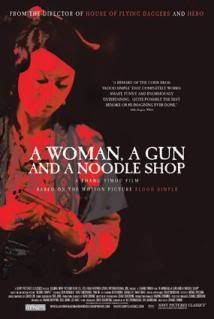
"This is nothing like BLOOD SIMPLE," I thought, as Zhang Yimou's remake of the Coen Brothers' first film began. I mean, it opens with a gaudily-dressed Persian pirouetting around with a fancy sword , dicing up random things in the noodle shop and generally shocking the hell out of the collection of buffoons who worked there. This scene is shot like a pastiche of the overly-choreographed action in Yimou's better-known (in North America) films, HERO and HOUSE OF FLYING DAGGERS (action scenes which are practically pastiche already). It's incredibly fast and hard to follow, and doesn't seem to sync up with anything in the Coen Bros original. Which, when you're doing a remake of a great film, is probably a good thing.
The situation is similar: the boss wants to find out if his wife is cheating on him, and hires someone to do so. When his suspicions are confirmed, he hires the same person (in this case, a steely-faced police officer named Zhang, played by Sun Hunglei; in the original, the inimitable M. Emmett Walsh) to kill both his wife and her lover. And then things go wonky. But, despite this similar situation, for the first part of the film, it really seemed like a stretch to call this a remake. And then things all fall into place.
OK, so, the plot points all end up being similar. But stylistically, there is virtually no similarity between the two films: NOODLE SHOP is a slapstick comedy set against a vibrant, technicolor background, with weird comedic characters that must be stock characters of some sort (but of what stock I don't know), and broad performances that outpace realism so greatly that they end up lapping it.
This results in an incredibly quirky film. The four employees of the noodle shop, along with the wife (Yan Ni), are all played with break-neck absurdity; the killer, Zhang, on the other hand, is played with such quiet intensity that he's capable of building a good deal of dread, even in his ridiculous surroundings. So, it ends up like you're watching the Three Stooges get offed by Anton Chigurh, in a period piece. The stark contrast between the murderer and his prey--it's like they've come from two different movies--adds what I can only call a unique "weirdness" to the film that I've never encountered before.
Labels:
Coen Brothers,
Remake,
Sun Hunglei,
Xiao Shenyang,
Yan Ni,
Zhang Yimou
Thursday, September 16, 2010
Blood: The Last Vampire (2009)
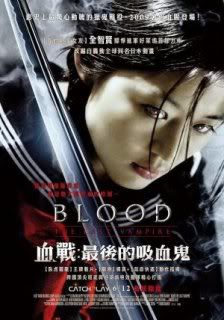
I have never been a big fan of the cross-pollination of media. If something started off as a cartoon then dammit, it should stay a cartoon and I have all of the live-action Flinstones films, Underdog, Mr. Magoo, and The Adventures of Rocky & Bullwinkle to support my irrational belief.
That being said, I really can't hate totally on Chris Nahon's Blood: The Last Vampire because it was derived from Hiroyuki Kitakubo's 2000 animated film that was long on visuals yet short on story and character development.
A house not built on a firm foundation will fall and all that sort of thing, but there are more serious issues with this live-action adaptation than the source material.

That being said, I really can't hate totally on Chris Nahon's Blood: The Last Vampire because it was derived from Hiroyuki Kitakubo's 2000 animated film that was long on visuals yet short on story and character development.
A house not built on a firm foundation will fall and all that sort of thing, but there are more serious issues with this live-action adaptation than the source material.

Like the anime, Blood: The Last Vampire is set in Vietnam War-era Japan and follows the activities of the half-vampire ass kicker, Saya (Gianna Jun), as she tracks down the remnants of a race of shape-shifting demons in the hopes of securing a showdown with their leader, Onigen (Koyuki).
The live-action adaptation deviates from the anime by replacing the hysterical and irritating overweight nurse sidekick with Alice McKee (Allison Miller), the level headed teen-aged daughter of General McKee (Larry Lamb), the commanding officer of Yokota Air Force Base who is murdered by members of The Council; the mysterious organization working with Saya to prevent a demonic invasion of earth.
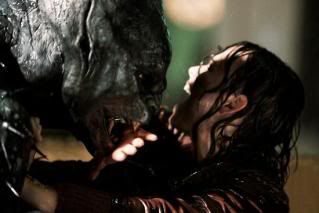
The live-action adaptation deviates from the anime by replacing the hysterical and irritating overweight nurse sidekick with Alice McKee (Allison Miller), the level headed teen-aged daughter of General McKee (Larry Lamb), the commanding officer of Yokota Air Force Base who is murdered by members of The Council; the mysterious organization working with Saya to prevent a demonic invasion of earth.

A more apt title for this movie would be Blood: The Gianna Jun Experience as the film primarily showcases Gianna's looks and physicality at the expense of giving veteran actors Koyuki and Colin Salmon anything meaningful to do.
I'm not sure if they got paid by the hour and the money well ran dry but if you blink at the wrong times, you will miss Salmon's brief diatribe on why demons hate humans or the really anti-climactic final brawl between Saya and Onigen.
If money was saved on the pay-per-appearance budget, it certainly wasn't spent on the CGI as Blood: The Last Vampire features some of the worst computer generated effects in the history of cinema. We're talking Scorpion King at the end of The Mummy Returns or Brontosaurus stampede in Peter Jackson's King Kong levels of awfulness. The effects are so bad they if you are not careful, they will absolutely kill your ability to watch another frame of the film.
You might even swear that the CGI was actually claymation until you watched Clash of the Titans, witnessed a master at work, and suddenly felt the urge to write Ray Harryhausen an apology letter for ever making such an insulting comparison.
Couple that with the overstylized wire-fu fight scenes and the task of watching this feature through to completion suddenly becomes an exercise in endurance.

I'm not sure if they got paid by the hour and the money well ran dry but if you blink at the wrong times, you will miss Salmon's brief diatribe on why demons hate humans or the really anti-climactic final brawl between Saya and Onigen.
If money was saved on the pay-per-appearance budget, it certainly wasn't spent on the CGI as Blood: The Last Vampire features some of the worst computer generated effects in the history of cinema. We're talking Scorpion King at the end of The Mummy Returns or Brontosaurus stampede in Peter Jackson's King Kong levels of awfulness. The effects are so bad they if you are not careful, they will absolutely kill your ability to watch another frame of the film.
You might even swear that the CGI was actually claymation until you watched Clash of the Titans, witnessed a master at work, and suddenly felt the urge to write Ray Harryhausen an apology letter for ever making such an insulting comparison.
Couple that with the overstylized wire-fu fight scenes and the task of watching this feature through to completion suddenly becomes an exercise in endurance.

The otaku that love the Blood anime will invariably love this movie also and will be much more accepting than I ever could be.
It is an engaging enough tale with ample action and a short enough runtime not to send a casual viewer into a raging fit and to be honest, you are better off watching this than one of the Flintstones movies.
If you must track down a cartoon / live-action crossover, go find Popeye or Josie & The Pussycats.
If it has to be anime / live-action, then revel in the forgivable campiness of Speed Racer.
It is an engaging enough tale with ample action and a short enough runtime not to send a casual viewer into a raging fit and to be honest, you are better off watching this than one of the Flintstones movies.
If you must track down a cartoon / live-action crossover, go find Popeye or Josie & The Pussycats.
If it has to be anime / live-action, then revel in the forgivable campiness of Speed Racer.
Monday, September 13, 2010
Capsule Review: The Maltese Falcon (1941)
Despite coming out the same year as Citizen Kane, John Huston's feature debut The Maltese Falcon doesn't often get as much credit for some of the same revolutionary features as Welles' film, such as the use of expressionist lighting (inspired by The Cabinet of Dr. Caligari and others), or the use of low angles which showed of the ceilings of the many indoor sets. However it does (rightfully) get credit for ushering in Film Noir and launching the careers of it's note-perfect cast, including Humphrey Bogart (who was already a name, but not yet the romantic lead he would become), Mary Astor, Sydney Greenstreet and Peter Lorre. Adapted from the detective novel by Dashiell Hammett, the film's plot is rather difficult to follow, but is performed so perfectly - with Huston's assured (and prepared) hand leading the way - that it never gets frustrating to watch. Perhaps the perfect detective film, and featuring the prototypical MacGuffin in the titular falcon.
The Little Dragons (aka Karate Kids USA) (1979)
Directed by Curtis Hanson (L.A. Confidential, 8 Mile), co-written by Alan Ormsby (Cat People, Children Shouldn`t Play With Dead Things), and featuring performances from the legendary Ann Sothern and Joe Spinell (Maniac), there was a possibility going in that The Little Dragons might be a fun, breezy kid's movie. Unfortunately, even as kiddie entertainment it leaves plenty to be desired as while the combination of youngsters and martial arts would hit big a few years later (which i'm sure explains the re-title here), and the idea of inserting a bit of Bad News Bears attitude into things could have been enjoyable, we're left with a flat, slow-moving bore that plays (and looks) like something made-for-TV.
Zack and Woody are precocious (and foul-mouthed) karate students who travel to a campground with their grandfather J.J. (character actor Charles Lane) for a karate exhibition. Also travelling to the camp is the young Carol and her bickering parents, who get some help from "hill people" Carl and Yancey (John Davis Chandler and Joe Spinnel) after getting lost in their top-of-the-line RV. While they eventually reach the camp, Carl and Yancey (along with their mama, played by Ann Sothern) hatch a plan to steal the R.V.,a plan that quickly goes awry when they find Carol inside and make the quick decision to kidnap her.
Zack, who bonded with Carol during a camp hootenanny, follows the hillbillies to their mine-shaft hideout, while Carol's parents, J.J. and Woody have to deal with dumb-shit sheriff and his son. Thankfully, once the ransom note arrives things are passed over to the (slightly more competent) F.B.I., though it's eventually up to the KARATE KIDS (along with their karate classmates, and with the help of some friendly bikers) to take down the rednecks in a display of their martial arts skills. If you're guessing that Joe Spinnel ends up down the hole of an outhouse, then you're obviously way ahead of me.
Look, i'll admit that I haven't been a kid for a long time, and even when I was I tended to reject crap like 3 Ninjas (and its various sequels) as predictable and inoffensive crap. In fact, I think making entertaining, original and challenging children's films might be one of the most difficult things for filmmakers to get right - which is why what Pixar has been doing this decade has been so amazing. But even 12 year old me wouldn't have gotten much out of The Little Dragons, which has almost no action to speak of until the final ten minutes and humor that even ten year old me would have found immature.
Here's an example of the film's humor. J.J., unimpressed by Woody's use of the word "shit", tells the boys that their father used to make up his own curse words as a child. When prompted by the kids, J.J. says that one of his favorites was calling people "soufflé". Ok, now that's dumb, but fairly inoffensive. Except, the film decides that it would be hilarious to keep calling back to this joke: Woody gets in trouble for calling a biker gang leader a soufflé, J.J. calls the idiot sheriff a soufflé. It sounds like something out of a particularly awful sitcom, but the film is full of hacky moments like this, though still required four (FOUR!) credited writers to churn out this pablum.
In any other context Joe Spinell's ridiculous man-child overacting as Yancey would be irritating, but his performance is actually a relief when compared with the sedentary pace and sleepwalking performances by most of the cast. In fact, the hillbillies are really the only interesting characters in the film, though their motivations (go to Las Vegas and see Wayne Newton) are a bit suspect, and their wish to kill the two kids at the end seems needlessly mean-spirited. The other supporting players are all ok, and most have had long careers in television and movies, but it's all so bland and dull that any spark if interest tends to stand out. The kids actually do a fine job, though Woody smart-aleck comments sort of reminded me why smart-alecky kids are annoying.
Curtis Hanson is a fine director, but I imagine he leaves this one off of his resume as it features little of the rapid pacing and polished dialogue of his more successful efforts. Cinematographer Stephen M. Katz did both The Kentucky Fried Movie (Bong Soo Han, who played Dr. Klahn in the legendary A Fistful of Yen makes a brief appearance here) and The Blues Brothers, but he also went on to be the Director of Photography on Baby Geniuses so I guess nobody's perfect. All the other technical specs are perfectly average, vanilla and forgettable.
The Little Dragons is part of the Millcreek 50 film Martial Arts collection, and is presented fullscreen in a print that looks like its had a bit of a rough time. There's minor damage throughout, and a scratch that runs through the opening credits. Colors are washed out and faded, though consistent throughout. Music is by TV veteran Ken Lauber, and it's fine though - like the rest of the production - ultimately forgettable.
There are no special features except a few randomly placed chapter selections. At least it's something.
Lifeless and dull, The Little Dragons has a fine pedigree but suffers from writing that seems straight out of a Scooby Doo cartoon. The villains seem to be having fun, but everyone else is sleepwalking through their roles and while the precocious kids do a good job, they are never given much interesting to do. Many of the people involved either did, or would do, much better work, but The Little Dragons is definitely a film worth forgetting.
Saturday, September 11, 2010
Capsule Review: Sweet Sweetback's Baadasssss Song (1971)
Often credited with birthing the blaxploitation genre, Melvin Van Peebles' controversial film showed that a black audience would come out in droves for films appealing to their interests, though - outside of the race of the lead - Sweet Sweetback's Baadasssss Song hardly resembles the more populist fare that would follow. Peebles plays Sweetback nearly silent, working as a featured player in a live sex show until being pushed to participate in a police line-up. When the officers arrest and beat on a young black activist, Sweetback brutally attacks them, sending him on a series of encounters as he finds himself on the run. Often confusingly edited, though with a kinetic energy echoed in the soundtrack by Earth, Wind & Fire (who sing the film's tagline: "You Bled My Mother, You Bled My Father, But You Won't Bleed Me"), the series of vignettes that follow are often amusing (after being pitted against an amazonian female biker, and asked to choose a weapon, Sweetback thinks for a moment before responding: "Fuckin'". Whether Peebles' aim for the film was art, protest or commerce is up for debate, but it remains an important mark in exploitation film (though, oddly, it's not really an exploitation film itself), and contains a particularly jarring and memorable ending. The making of the film was dramatized in the 2003 film BAADASSSSS!, starring Melvin's son Mario in the lead.
Capsule Review: Broken Blossoms or The Yellow Man and the Girl (1919)
While the level of cinematic innovoatin apparent in The Birth Of A Nation (1915) and Intolerance (1916) may not be as evident here, D.W. Griffith's Broken Blossoms is a much more coherent and attractive ode to tolerance, even if it's without the epic trappings of his earlier films. The film, based on a short story called "The Chink and the Child by Thomas Burke, must necessarily be viewed in the context of the time it was made - Caucasian actors play all of the lead Chinese parts (and not very convincingly) and racial slurs are tossed around quite casually - but it's gentle ode to tenderness and peace, and isn't afraid to make Americans look barbaric. The story follows the waif Lucy (the luminous Lillian Gish), a young girl continually abused by her brutish boxer father until, after a particularly violent beating, she collapsed on the floor of a shop owned by Cheng Huan (Richard Barthelmess) who nurses her back to health. Compared to the huge period sets of Intolerance, Broken Blossoms focuses on a handful of locations (shot on a stage compared to the location shooting of Griffith's earlier films), but it's still clearly a Griffith film - employing cross-cutting, period detail, and stylish cinematography by Billy Bitzer.
Thursday, September 9, 2010
Capsule Review: The Shawshank Redemption (1994)
Dwarfed by the success of Pulp Fiction and Forrest Gump at the time of its release, a near constant rotation on television steadily rose the profile of Frank Darabont's adaptation of Stephen King's novella "Rita Hayworth and Shawshank Redemption" until, improbably, it's become one of the most beloved films of the 90s. It's a film that is endlessly re-watchable, brisk despite its lengthy run-time, and featuring a slew of terrific performances which buoy its slower moments. Darabont, who was best known for writing (enjoyably) schlocky horror films, obviously put everything he had into the production, which is surprisingly confident considering it was his first real theatrical feature. Full of great, memorable moments and images - James Whitmore's performance is a highlight - Shawshank remains a strikingly optimistic and sincere film. At a time when cynicism was at an all time high, even the borderline sappiness is endearing.
Wednesday, September 8, 2010
Capsule Review: Paradise Now (2005)
 A measured and often intense rumination on conviction, friendship and death, Hany Abu-Assad's Paradise Now follows two close friends, Said and Khaled, who are chosen by an extremist group in the West Bank to perpetrate a suicide bomb attack in Tel-Aviv. We witness the two men go through their final night, spending time with family, before being bathed, shaved and dressed in fine suits for their eventual martyrdom. Abu-Assad generally resists the urge to speechify, instead having the inner conflict play out in the mannerisms and eyes of his two main actors - particularly Kais Nashif as Said, who carries an unforgettable weight in his gaze. A beautiful and poignant film dealing intelligently and sensitively with a difficult topic, Paradise Now well deserved its slew of awards (including a fest foreign film nomination at the Oscars).
A measured and often intense rumination on conviction, friendship and death, Hany Abu-Assad's Paradise Now follows two close friends, Said and Khaled, who are chosen by an extremist group in the West Bank to perpetrate a suicide bomb attack in Tel-Aviv. We witness the two men go through their final night, spending time with family, before being bathed, shaved and dressed in fine suits for their eventual martyrdom. Abu-Assad generally resists the urge to speechify, instead having the inner conflict play out in the mannerisms and eyes of his two main actors - particularly Kais Nashif as Said, who carries an unforgettable weight in his gaze. A beautiful and poignant film dealing intelligently and sensitively with a difficult topic, Paradise Now well deserved its slew of awards (including a fest foreign film nomination at the Oscars).Tuesday, September 7, 2010
Capsule Review: Peking Opera Blues (1986)
It's a little hard to get across how exhilarating and different Tsui Hark's Peking Opera Blues seemed to 80s audiences not used to the kinetic chaos of Hong Kong films. Filled with colorful, impeccably orchestrated scenes, the film packs action, romance, politics and much more into a rollicking package. Taking place in 1913, the movie follows three females who are each following their own agendas: Tsao Wan (Brigitte Lin) is the educated daughter of the powerful General Cao who is working with a group of rebels to help end the monarchy. Sheung Hung (Cherie Chung) is a thief obsessed with finding a box of stolen jewels, and Pat Neil (Sally Yeh) is desperate to break into acting in the Peking Opera despite it not allowing women. Truly a film that has something for everyone, Hark dissects gender roles while juggling a plot that jumps around rapidly in terms of pacing and tone while still managing to hold together beautifully.
Monday, September 6, 2010
Capsule Review: The Good, the Bad and the Ugly (1966)
The third, and best, of Sergio Leone's "dollars" trilogy, The Good, the Bad and the Ugly has Leone working at the very height of his powers, combined with three legendary performances and an unforgettable score from Ennio Morricone. While Clint Eastwood brings his usual icy charm, and Lee Van Cleef is excellent as Angel Eyes, it's Eli Wallach as Tuco (The Bad) who steals the film with a combination of wretchedness and surprising pathos. All three are racing towards a fortune in Confederate gold, but it's the journey that makes this such a sterling example of what Spaghetti Westerns did best - exploring the mythology of the American West as filtered through the iconography of American western films. So many classic moments, but it's the final stand-off between the three men that remains its most memorable moment - backed by Morricone's "The Ecstasy of Gold". Supremely entertaining.
Sunday, September 5, 2010
Capsule Review: Intolerance: Love's Struggle Throughout the Ages (1916)
Unbelievably epic, D.W. Griffith's Intolerance was originally concieved to be a response to the - quite legitimate - complaints that his Birth of a Nation promoted racism in demonstrating the rise of the Ku Klux Klan. Griffith devised a film that covered almost the entirety of human history, demonstrating repeated (and reflective) acts of intolerance in four different eras: The Modern Story (A.D. 1914), The Judean Story (A.D. 27), The French Story (A.D. 1572) and the Babylonian Story (539 B.C.). Griffith cuts between each story rapidly during the over three hours of running time, featuring some astounding set pieces - particularly in the jaw-dropping Babylonion sequences - and some quite risque examples of violence and nudity. Frequently Griffith cuts to the lovely Lillian Gish as the symbol of eternal motherhood forever rocking the cradle of life. Full of cinematic invention (particularly in its non-linear storytelling) and featuring a scope (and cost) that was the biggest of the time period, Intolerance may not always hold together but remains an astounding achievement. Many versions of the film exist, but Kino's release trumps the muddy public domain prints.
Saturday, September 4, 2010
The Guy From Harlem (1977)
Who's the black private dick / That's a sex machine to all the chicks? Well, that would have to be The Guy From Harlem, a bizarre blaxploitation effort that features some of the poorest production i've seen outside of a Bloody Nightmares film. This one really has it all: a director lacking a rudimentary knowledge of storytelling, retina-burning 70s decor, actors who wouldn't cut it in community theatre, and the fight scenes.. wow, the fight scenes. Despite these (obvious, glaring) flaws, for those in the right state of mind - and an appreciation for the goodness of badness - there is plenty to enjoy here. The Guy From Harlem is shit, but it's deliriously entertaining shit.
Loye Hawkins is Al Connors, the eponymous Guy From Harlem, and as the title credits roll - and roll they do, as the film's entire credits run at the beginning, over scenes of Al driving around the city and backed by the oddly catchy Guy From Harlem theme song - we'll quickly notice that Al isn't actually in Harlem. In fact, Al works as a private detective in sunny Miami, Florida, though (as he mentions repeatedly) he cut his P.I. teeth working the mean streets of Harlem. Thankfully all of that growth and interesting material is in his past, so we can see him fuck around aimlessly in Miami.
Al seems to have a comfortable living, and an office that looks suspiciously like a pre-school classroom. He also has a reputation as a bit of a ladies man, which he puts into practice whenever a hint of a vagina enters his field of vision. He's visited by David McLeod, an old friend (from HARLEM) and CIA agent who wants Connors to take on the job of protecting the lovely Mrs. Ashanti, wife of a diplomat from "an African nation". McLeod warns about the international repercussions of Al sexing up this African Queen/Princess (the film seems confused about which), but all is fair in love and greasily hitting on the partners of foreign dignitaries.
The two stay at a hotel, pretending to be husband and wife, but this ruse is quickly seen through by a parade of baddies who - in attempting to kidnap Ashanti - are rapidly brought down by Al's street-perfected fighting style. First there's a syringe-wielding masseuse whom Al scares off by watching her rub down the Princess (which - yes - is creepy), then a room service attendant in drag, and finally a group of thugs whom are taken down by some patented Al-fu. The pair then move onto a safe spot - an apartment owned by one of Al's former conquests - before plowing through the seventh commandment. Al delivers Ashanti safe and sound, and they all live happily ever after.
Except that we're only about half way through the movie. How episodic. Now we move on to the bulk of the plot, where Al is visited at his office by "legitimate businessman" Harry De Bauld, who - along with his more sedate - irritate Al's secretary before gesticulating wildly about his kidnapped daughter. Apparently she's been taken by Big Daddy, the other gangster in town, who was also behind the plot to kidnap the African Princess/Queen/whatever. Harry wants Al to be the one to make the trade (of drugs and money) for his daughter, and - after realizing that the daughter would make a fine conquest - decides to take the job.
However, Al decides to ignore what he's actually been paid to do, and instead takes on Big Daddy's cronies by himself. He cleverly tracks down their secret hide-out/shack, and takes down the baddies one by one, in some of the most confounding scenes of action ever to be put on film. Limbs are flung with wild abandon, and bodies crash to the ground seemingly randomly, but Al - of course - comes out on top. He's the man from Harlem. However, there's one fly in the ointment - Harry's daughter Wanda (who had to fight off some icky advances from Big Daddy's men) has no interest in going back to her corrupt father. Instead, the two return to the apartment of Al's lady-friend (who seems a bit upset that he's using her place as a love shack), where they proceed to screw. Professional.
While Harry is a bit upset at first that Al has taken the drugs to the police instead of making the trade, he is pleased to have his daughter back. The only problem is that Big Daddy wants Al dead, and that doesn't sit well with Al (or Wanda, who Al has decided to commit himself to), so a meeting is set up for the two to work out their differences. Big Daddy is a big, blond body-builder, so Al's decision to decide his fate with hand-to-hand combat may seem like an odd decision, but this is the Guy From Harlem! Big Daddy's goons are taken out by Harry's men, while Big Daddy gets thrashed by Al's fists (and feet) of fury. Al and Wanda walk off into the sunset, obviously looking forward to The Guy From Harlem 2.
The Guy From Harlem 2 never materialized. In fact, director Rene Martinez Jr. only made one other film, and it has a rather controversial title (now THAT I need to see). Hopefully - though improbably - Martinez's skills improved for that film, as here we're dealing strictly with amateur hour. The camera ignores the most basic rules of composition, and when wide shots cut to close-ups suddenly the players switch positions. Actors flub lines, or immediately repeat seemingly improvised dialogue, and it's just left in! The camera is locked down, making the action scenes look particularly odd and static - even when the actors are flamboyantly rolling around.
Performances either have the actors chewing on the scenery, or so sedate it looks like they are about to fall asleep. The general feeling seems to be that Loye Hawkins is terrible as Al Connors, but I actually think he shows a reasonable amount of charisma, and manages not to stumble over most of his dialogue. I mean, the whole film seems to have been shot in single takes, so Hawkins deserves some credit for not botching his lines left and right. Compare his performance to the female leads, who were obviously picked for their looks - and willingness to disrobe - rather than their ability to deliver the (awful) dialogue convincingly. Steve Gallon as Harry De Bauld seems to at least be having some fun, but the villains are awful across the board - especially in the unnerving scenes when they are pawing on their female captive. The look of the whole thing makes it feel like a snuff film could break out at any moment.
Rafael Remy did the cinematography on this project and it's frankly hard to believe that he had previous credits on a number of films, because every shot here looks flat and ugly. Lighting and sound credits are fine, though it says a lot about this film that these minor examples of technical competence are even worthy of being mentioned. Sets are minimal, and those that are shown are about as garish and blindingly awful as you might expect. Beautifully wretched.
The Guy From Harlem is presented in a 4:3 (1.33:1) ratio which is spotted with damage, grain, and missing frames which makes watching it feel like a real drive-in experience. I'm not sure what the original aspect ratio was, but it doesn't feel like much significant action is happening off the edges of the frame. Or, in the film at all to be honest. Incidental music by Dr. Cecil Graham is repetitive but unobtrusive, though it's the theme song by The Brand New Review that is likely to stick with you. I know I've been annoying my wife with it for the last few days.
This is part of the Millcreek 50 Martial Arts movie pack so, while it thankfully has a few chapter stops, everything else is bare bones. A shame, since something this inept must have some great stories behind it.
Completely terrible while still being surprisingly watchable, The Guy From Harlem hits that sweet spot of badness that keeps you laughing in disbelief at what you're seeing. The acting, direction and writing are pathetic, but never become tedious and the film somehow manages to keep up momentum until the 90 minute mark. I'm not interested in the further adventures of Al Connors, but in all the film was a pleasant surprise and worthwhile for fans of bad cinema.
Subscribe to:
Posts (Atom)





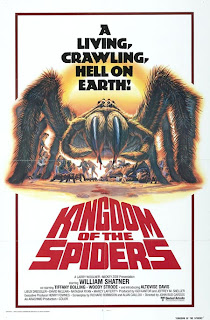

.jpg)



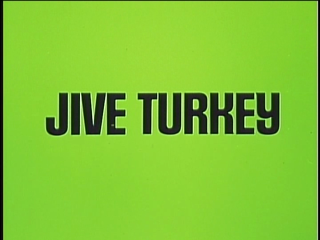
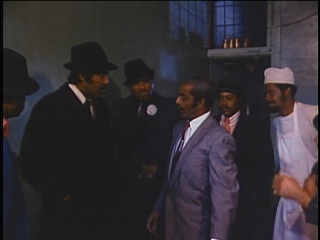
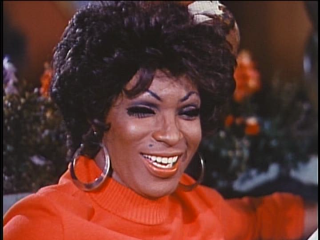
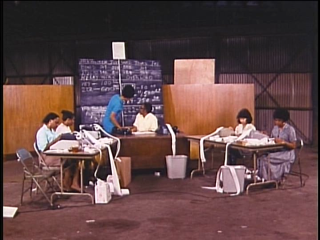
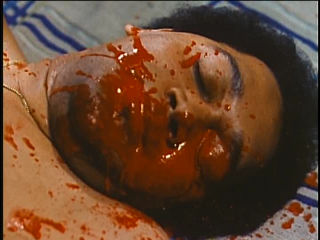
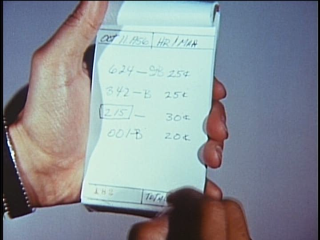


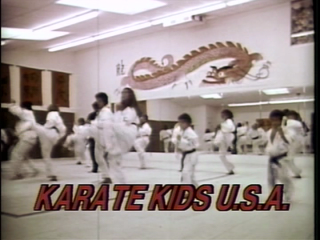
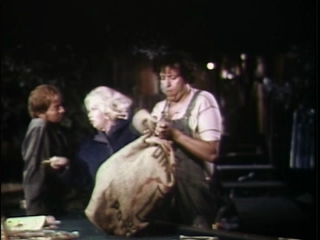
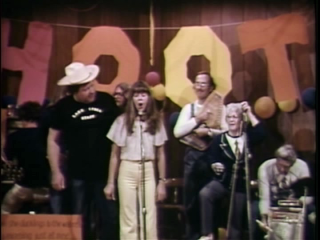

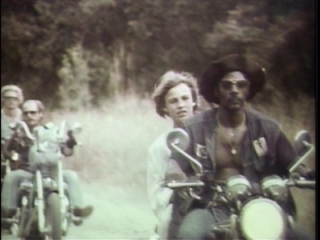





.jpg)
